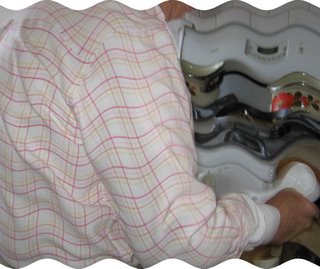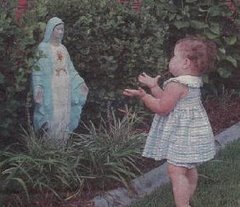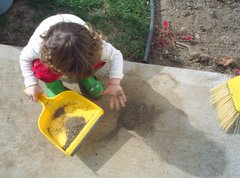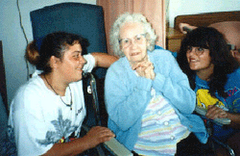The priest's talk was presented at the Augustinian Monastery (now closed and sold to Protestants), and I remember the large crowd who were interested in learning about the anticipated changes in the Church because of Vatican II. The priest presented a glowing image of the vital Church of the future and the new simpler liturgy that would attract many new persons to the Catholic faith. He emphasized that the new Church would appeal to modern people who were living with many new things in their lives.
Why didn't I believe him? The reasons were identified in an old psychology book used as a text in the late 1950's that discussed Levittown, Long Island, NY, about 25 miles east of Manhattan.
One of my college roommates was a psychology major (I never touched the stuff!), yet one evening in the dorm I picked up one of her textbooks and began to read about a psychological evaluation of the people of Levittown, NY. This first of four Levittowns is the most famous and is a planned residential community of 17,500 houses that was built in 1947-1951. Building contractor William Levitt's objective was to provide inexpensive housing for returning World War II veterans and their families.

The author of the psychology textbook emphasized the young families who had settled Levittown. Residents of different cultures and religions were now living as strangers next door to one another--as contrasted with their prior lives living with their parents in neighborhoods of their own kind and where people all knew each other.
The author commented that religions which exemplified a solid and unchangeable nature could expect to gain adherents if they advertised that fact. The text said that people whose lives were so changeable in work and place of residence would be looking for something firm in their lives--something to hold onto--something that would not change. The author specifically commented that traditional churches such as the Catholic Church could expect many conversions from the rootless people of Levittown.
I remember telling the Roman priest in the Question & Answer session at the Augustinian Monastery why the Church always should appear to be constant, firm, and unchangeable, especially to modern Americans who were changing jobs more frequently, and moving from older stable communities to new suburban communities where their neighbors were strangers. I explained why apparent 'changes' in the Catholic religion would cause the Church to appear unstable and make Vatican II unsuccessful.
A psychology text instructed us in the 1950s that people living a modern life of continual change will ultimately desire to establish roots--and unchangeable Catholicism was in a perfect situation to capitalize on that psychological need. In contrast, the priest scholar from Rome was telling us in the mid-1960s that Catholicism must undergo radical changes to keep pace with modern life! That's the time when I knew Vatican II was going to lead to terrible consequences.








3 comments:
Dusty, an excellent post once again. It all makes so much sense that we are doubly fools for not seeing what we (the Church) should have seen when it was so obvious.
By the way, where was this Augustine building the talk was at? I am unfamiliar with it.
The location of the Augustinian Monastery is about 34th and Parallel in Kansas City, KS. The Monastery closed and was sold to a Protestant group over 20 years ago.
Dusty,
I was about 8 years old when Vatican II was implemented in my parish. I had loved church, I was an altar boy, and I even had thoughts toward the priesthood.
I came to the conclusion that if the Catholic faith was so easy to change it must all be bullshit.
It took me 40 years of wandering in the desert of Vatican II to find my way back home.
Post a Comment